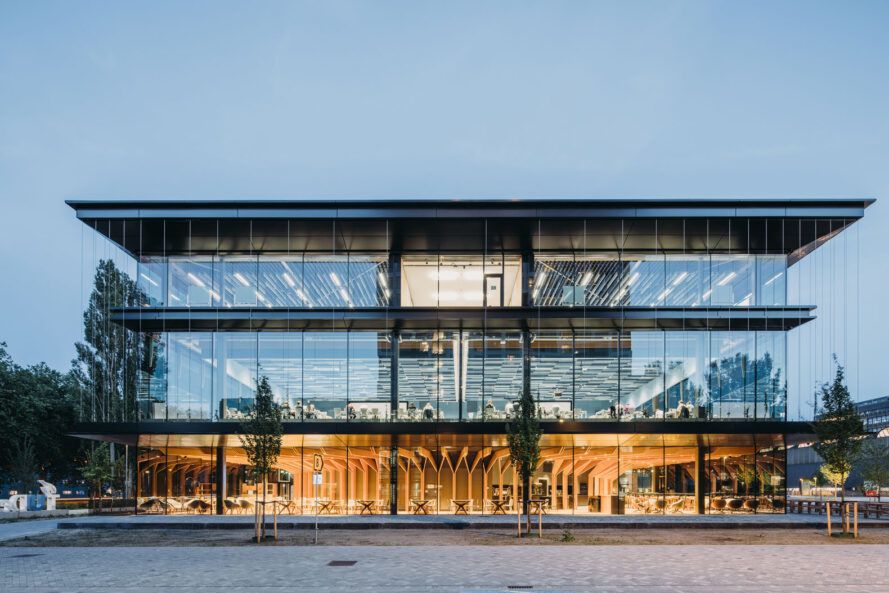
Echo by UNStudio generates more energy than it uses
Meet the building of the future: Echo, a UNStudio-designed teaching building for the Delft University of Technology in the Netherlands. This building is designed to generate more energy than it consumes. Echo will serve faculty and students in a modular plan to accommodate a growing number of students and different learning types. Plus, the Dutch university has committed to making its campus fully sustainable by 2030.
Continue reading below
Our Featured Videos

The Echo building is packed with solar panels across its entire roof — 1,200 of them. The building features extra insulation as well as heat and cold storage systems to capture energy for later use. Even user-related energy is accounted for, including energy consumption for powering laptops, lighting and catering.
Related: Portland State University’s new hall qualifies for LEED gold

“The Echo building teaches by example. In this highly compact building, the use of space is maximized, while bringing students from different disciplines in closer contact. Not only can they condense their learning experience and learn from each other, but they can also learn from the building itself,” says lead designer Ben van Berkel.

There are two interesting things about this building in particular. One, it makes energy generation a priority rather than just reducing energy consumption, which could serve as a model for the new normal as countries battle climate change. Two, the Echo building puts particular emphasis on modular construction of the interior to allow for repurposing of the spaces in the future. This maximizes the usefulness of the building while still designing around the well-being of the people who use the space.

The furniture in the building is a whopping 90% reused. Meanwhile, many elements can be shifted around the building as needed to reconfigure spaces for different uses from office space to teaching classrooms.

Echo looks anything but repurposed, covered in a glass facade with open floor space for modular reconfiguration as a future option. To reduce energy consumption, the windows ensure maximum natural daylight, which is also known to be healthier for the people using the building. The open building connects the outdoors of the campus to the interior of the building and creates a bright, welcoming environment.

“Overheating of the building is prevented by a combination of sun protection and the low solar penetration factor of the glass,” the designers explain. “In addition, the deep horizontal aluminum awnings keep out excess solar heat. These canopies are interconnected by cables along which climbing plants form a subtle green facade that filters daylight.”

The glass does not open to the outside, so to ensure clean air indoors, a plenum floor was installed above hollow-core slabs. Fresh air is pumped up from the floor rather than from above. The vents for this system, as well as the computer floor installation, could quickly be relocated to accommodate different layouts of the rooms in the future.

The environmental impact of the materials used in construction was taken into account by UNStudio. Principles of circular design surround the building. UNStudio considered the reuse of materials, such as the hollow-core slabs and steel trusses, after the building has served its purpose.

Most classrooms in the campus building are medium to large in size, accommodating between 150 and 700 people for lectures. Smaller rooms throughout can serve as study rooms, and the building includes an additional four rooms for project-based teaching, each accommodating about 70 people.
UNStudio takes sustainability to another level with the Echo building. In a building that generates more energy than it uses, Echo is a welcoming space for students and the environment.
